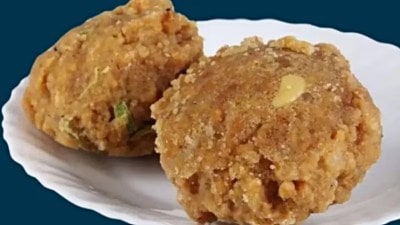📣 For more lifestyle news, click here to join our WhatsApp Channel and also follow us on Instagram
‘This one does not have a lining, padding’: As Asaduddin Owaisi reveals why he always wears a sherwani, we trace the history of the garment
"It is just like a kurta. This is made of normal cotton fabric," the Hyderabad MP recently said
 Asaduddin Owaisi in a sherwani (Express archives)
Asaduddin Owaisi in a sherwani (Express archives)Asaduddin Owaisi, All India Majlis-e-Ittehadul Muslimeen (AIMIM) supremo, is seldom seen without a sherwani. The politician likes to step out in style, but not without compromising on his comfort. During a recent interaction with NDTV, he was asked the reason behind his clothing choice, and Owaisi spilled the beans.
When asked if he does not feel hot in a sherwani all the time, the Hyderabad MP replied: “This one does not have a lining, does not have a padding. It is just like a kurta. This is made of normal cotton fabric. It’s just like a kurta pajama, It’s a part of India’s identity,” he told the interviewer.
For those unaware, a sherwani is a long-stitched, fitted coat worn by South Asian men on special occasions.
Tracing the history of the sherwani
Shilpa GNS, costume designer, told indianexpress.com that the origins of the sherwani can be traced back to Ancient Greek civilisation, where the silhouette focused on form and proportion, celebrating the human physique. These rectangular drapes were either pinned or tied to the body, representing body symmetry, democracy, and philosophy.
 Asaduddin Owaisi at the Parliament house. (Express archives)
Asaduddin Owaisi at the Parliament house. (Express archives)
“The Romans adapted these Greek drapes by incorporating stitching, evolving the drape from a wrap into a complete garment through the introduction of closures. The Persians advanced tailoring techniques by creating front-opening coats with sleeves and belts,” she elaborated, adding that these garments made their way along the Silk Route, impacting Byzantine, Turkic, and Mughal styles with the introduction of body-fitting designs, symbolising both strength and modesty through their structured layering.
While India’s traditional Dhotis and Angavastram were similar in draping style to Greek Drapes, the introduction of Persian-Turkic rulers brought the stitched coat into the fashion scene. “This combination resulted in the creation of the Angarakha (a hybrid coat). The Mughals then enhanced the Angarakha into the Jama (crafted from silk, tied at the sides, and lavishly embroidered),” said Shilpa.
Later, in the 18th century, the Indo-Islamic elite classes of Lucknow and Hyderabad merged the Jama with the British frock coat, transitioning from draping to tailored styles, resulting in a garment with a straight front placket, buttons, and a stand collar.
According to her, the contemporary sherwani now embodies nobility and intellect. “Indian weaving traditions (including Jamdani, Brocade, and Zari) imparted a distinctive and unparalleled appearance to the sherwani, while the rich embroidery conveyed notions of power, divinity, and regional craftsmanship, Shilpa added,” concluded Shilpa.
Mohit Nakra, Associate Professor, Department of Fashion, Alliance School of Design, Karnataka, said that cinema has played a vital role in keeping the sherwani relevant and admired.
“Shah Rukh Khan’s ivory sherwani in Kabhi Khushi Kabhie Gham became the inspiration for countless wedding looks. Ranveer Singh has given it a new edge by experimenting with dramatic silhouettes and vibrant colours. When Diljit Dosanjh appeared at the Met Gala, the essence of the sherwani was unmistakable,” he recalled.
He continued that designers today reinterpret the sherwani in innovative ways. It is now styled with dhotis, cropped trousers, and even sneakers. Modern versions appear in pastel velvets, metallic fabrics, and minimal embroidery. Yet, despite all these changes, the sherwani retains its true identity.
DISCLAIMER: This article is based on information from the public domain and/or the experts we spoke to. Always consult your health practitioner before starting any routine.
📣 For more lifestyle news, click here to join our WhatsApp Channel and also follow us on Instagram





- 01
- 02
- 03
- 04
- 05






















